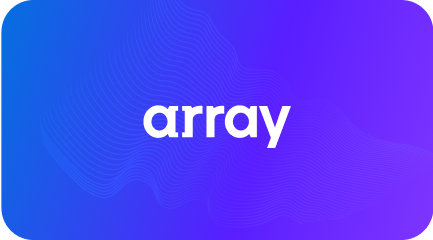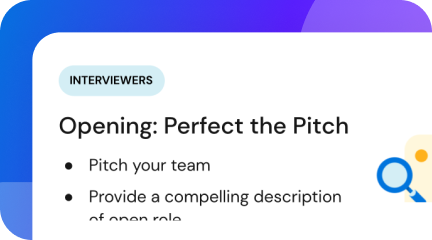We all want to make the very best hiring decisions. However, these critical choices are often influenced by unconscious bias. Unconscious biases are attitudes we hold that affect the way we feel and think about others. Although we’re typically unaware of them, there are prevalent types of interview bias that can influence how we perceive candidates and decide who to hire.
For example, asking candidates questions like, “Where did you go to college? What sorority/fraternity were you in?” may seem like friendly icebreakers. But, these questions are actually examples of common interview moments that are rooted in bias.
You can create a more fair, equitable hiring process by educating interviewers about biases. To help you equip interviewers with this knowledge and reduce the impact of bias in your interviews, we’re sharing four common types of interview bias:
4 Types of Interview Bias
Similarity bias
Similarity bias is your tendency to connect with others who share your interests, experiences, and backgrounds.
In interviews, similarity bias can cause interviewers to feel an affinity for candidates who share their characteristics, backgrounds, and lifestyles. This could include people who grew up nearby, attend the same school or place of worship, know the same people, or have similar hobbies.
How to counteract similarity bias:
- Anonymize candidates’ resumes before you review them, removing hometowns, schools, and hobbies.
- Keep small talk to a minimum to avoid subconscious favoritism.
- Hold your judgment until the end of an interview.
Confirmation bias
Confirmation bias happens when you draw conclusions about a situation or person based on your personal desires, beliefs, and prejudices rather than on unbiased merit.
It shows up in interviews when an interviewer focuses on points that support their conclusions and ignores facts that counter them.
For example, when reviewing a candidate’s resume, you might notice they have the same college degree as you. During the interview, you focus most of your questions on the degree, their classes, etc. However, you fail to dig into their other strengths and weaknesses, giving you a biased perspective of the candidate.
How to counteract confirmation bias:
- Take notes during an interview and review them afterward for possible counterpoints to what you noticed initially.
- Follow the hiring manager’s preferred list of questions, so you don’t deviate from the interview structure.
- Compare notes with colleagues and examine any discrepancies between opinions during the debrief.
Contrast bias
Contrast bias is when you compare people to each other and exaggerate the performance of one in contrast to the other.
If interviewing over a short time, interviewers may compare candidates to each other, potentially skewing their perception of the candidates.
For example, let’s say you have back-to-back interviews for the same role. Both candidates were well qualified, but one gave more concrete examples. When providing feedback, you give the candidate with concrete examples a glowing review while you write half-formed sentences for the other candidate.
How to counteract contrast bias:
- Take short breaks between interviews to compile notes and clear your mind.
- Delay your full assessment of the candidate pool until after all interviews are complete.
Superficial judgments
Superficial judgments happen when you evaluate others by what you see on the surface.
Without training to catch their own biases, interviewers’ opinions may be influenced by superficial things about the candidate, like their appearance, how they speak, how they dress, etc.
How to counteract superficial judgments:
- Conduct initial phone screens of candidates to avoid being distracted by things like appearance so that you can focus on their qualifications.
- Look past superficial qualities when assessing candidates.
- Reconsider any notes by you or your colleagues that reference these superficial observations. Ask yourself, “Does this observation reflect their capabilities for the role?”
5 Ways to Overcome the Common Types of Interview Bias
1. Cut out the small talk
Felice Ekelman, Principal at Jackson Lewis P.C., advises interviewers against small talk with candidates.
She says, “Although everyone thinks they need to engage candidates with an ice breaker, small talk isn’t relevant. Interviewers should use their time with candidates to focus on learning about their qualifications and ability to handle the responsibilities of the position.”
Opt for open-ended questions instead of small talk to open the lines of communication with a candidate, make them feel comfortable, and eliminate similarity bias from your hiring decisions.
2. Delay your judgment
Have you ever felt an immediate connection with a candidate you’re interviewing and realized their potential right away? You’re not alone – LinkedIn COO Dan Shapero says when interviewers share things in common with a candidate, they tend to see their potential faster.
While this instant connection may seem like a promising sign, deciding on a candidate too quickly can cause you to miss out on great talent. Dan’s found that waiting to make a decision until the end of an interview helps avoid bias.
3. Create a consistent interview process
Another key way to reduce bias: provide every candidate with a consistent experience by structuring your interview process. A great example of a best-in-class structured interview process comes from the talent acquisition team at NextRoll, a fast-growing marketing technology company. They built a framework for their interviews that established role requirements, key competencies, interview questions, and evaluation methods.
By creating a consistent structure around the interview process, NextRoll ensures candidates are measured against the same set of criteria and standards as their peers. This reduces the chances that some candidates might receive unfair (dis)advantages.
4. Invest time in training interviewers
Equip interviewers with tools and techniques to recognize great candidates without bias with an interview training program. With interview training, you can raise interviewers’ awareness of the unconscious biases that impact interviews, share real examples from your interviews where bias came into play, and help interviewers find ways to reduce bias in their conversations.
5. Level up your hiring technology
There are a number of tools designed to help you reduce bias in your hiring process, such as an interview intelligence platform like BrightHire. BrightHire is particularly useful in countering bias by allowing interviewers to record, transcribe, and play back their interviews.
Interviewers using BrightHire are also able to flag highlights for other colleagues to review. This creates more accountability and ensures that a candidate’s hiring decision never comes down to just one person’s subjective opinion.
Empower Your Interviewers, Reduce Unconscious Bias
The best way to reduce bias in your interviews and build a hiring process that’s fair and equitable is by training interviewers. Now, you can build a comprehensive, effective interview training program in one day with our Interview Training Deck Template and Facilitation Guide.
The Template is a comprehensive slide deck that covers everything your interviewers need to know to run fair, structured interviews. It’s packed full of activities, discussion prompts, and breakout sessions, so interviewers can walk away with real, actionable tips and resources.
The Template comes with a Facilitation Guide that walks you step-by-step through preparing for and presenting the training session.









